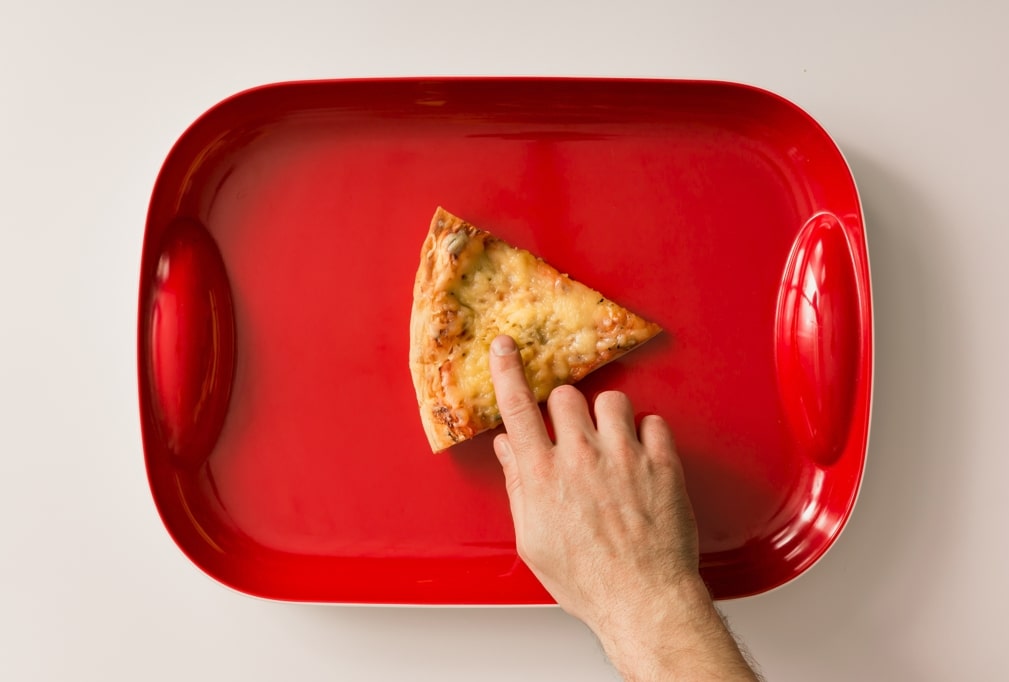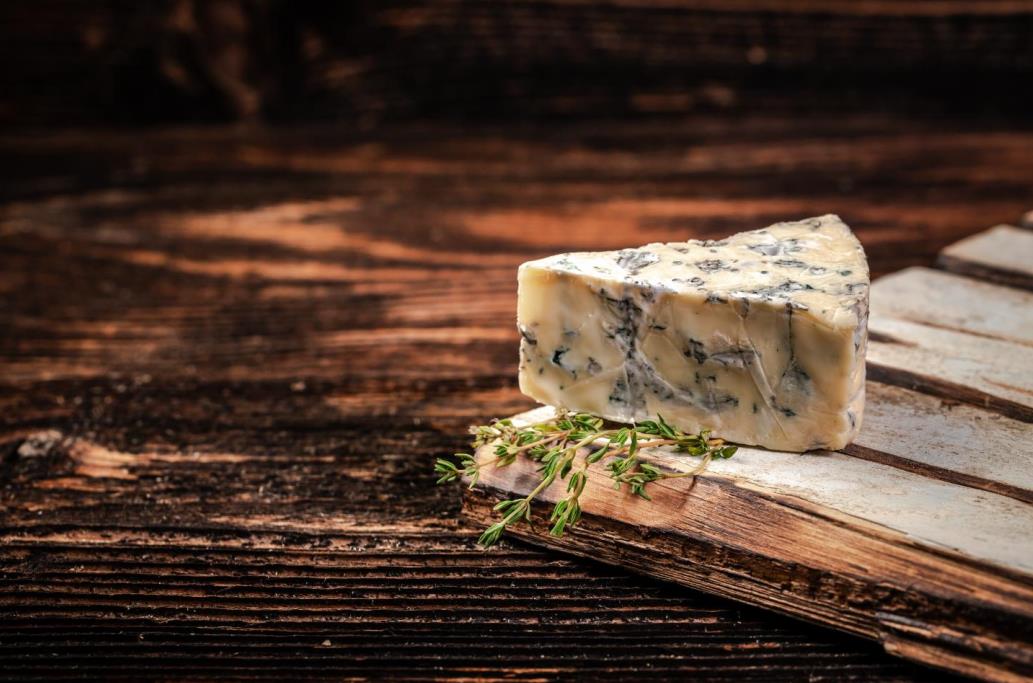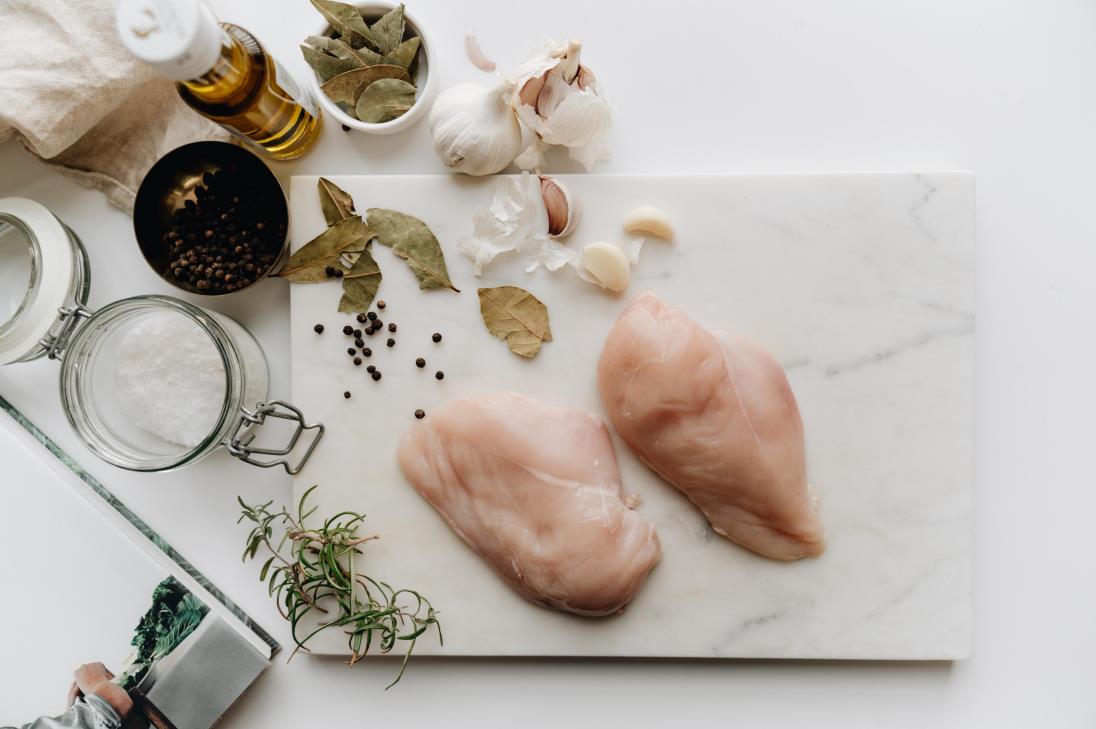Good cutting boards are kitchen essentials. Not only do they protect your countertops from scratches and knife marks, but they also make food preparation easier and safer. When it comes to size, however, there is no one-size-fits-all. The perfect cutting board sizes should match your needs and the available space in your kitchen.
The standard cutting board size is 12 inches by 18 inches, but typical standard sizes range between 10 inches by 14 inches to 15 inches by 20 inches. Some boards are large, while others are smaller than the typical standard sizes. A larger board measuring 18 inches by 30 inches is an excellent option for those with a lot of counter space, while a smaller board measuring 4 inches by 6 inches is ideal if you’re short on counter space.
Keep reading to learn about the different cutting board sizes and find the best one for your kitchen.
Table of contents
Why cutting board sizes matter
It’s no secret that most people ignore the cutting board size issue until they have to deal with it. A cutting board that is either too large or too small can make food preparation difficult and frustrating.
Picture a small cutting board. It’s challenging to maneuver a large roast or a whole chicken around on a board that is too small. Moreover, you can only fit a few ingredients on a small cutting board, which can be a significant inconvenience if you’re preparing a large meal. In addition, you have to keep moving the cutting board back and forth from the counter to the sink to wash it, which can be frustrating and time-consuming.
Now picture a large cutting board. It’s too big to fit comfortably on your countertop, and it takes up a lot of valuable space. You also can’t move it around easily from the counter to the sink without taking up extra time. By choosing the wrong size cutting board, you may end up with a board that is inconvenient and difficult to use.
The bottom line is that the perfect cutting board size should be large enough to accommodate the ingredients you plan to cut, but not so large that it takes up too much counter space or is challenging to clean.
General cutting board sizes
Cutting boards come in different sizes and shapes. When measuring the dimensions of a cutting board, you should consider the board’s width, length, and thickness. Most cutting boards have standard sizes, but specific boards may be larger or smaller than the typical standard sizes.
Standard cutting board sizes
Most stores sell cutting boards in standard sizes. The definition of a standard-sized board may vary, but in general, a standard cutting board is 12 inches wide by 18 inches long. These boards are big enough to handle most cutting tasks, but not so large that they take up too much space on your countertop.
Some chefs consider 10 inches by 14 inches or 15 inches by 20 inches standard cutting board sizes. While the 10 inches by 14 inches cutting board is smaller and more manageable, the 15 by 20-inch cutting board is larger and can accommodate bigger cutting tasks.
Small cutting board vs. big cutting board
The difference between a small and a large cutting board is the size of the cutting surface.
Small cutting board

The essence of a small cutting board is in its size and convenience. It fits easily on a countertop and is easy to move around. This type of cutting board is perfect for cutting small or delicate ingredients. Most home kitchens use small cutting boards when preparing single-serve dishes such as fruits and vegetables.
Below are varied small size cutting board dimensions
- 4 inches by 6 inches
- 5 inches by 7 inches
- 6 inches by 9 inches
- 10 inches by 8 inches
Pros of using small size cutting board
- Convenient for cutting small or delicate ingredients
- It doesn’t take up a lot of counter space
- Easy to move around
- Easy to clean
- Storing is no problem
- Features compact design
Cons of using a small cutting board
- It can only fit a limited number of ingredients
- Not great for cutting large or thick items
- It may be unstable on the countertop due to its small surface area
Big cutting board
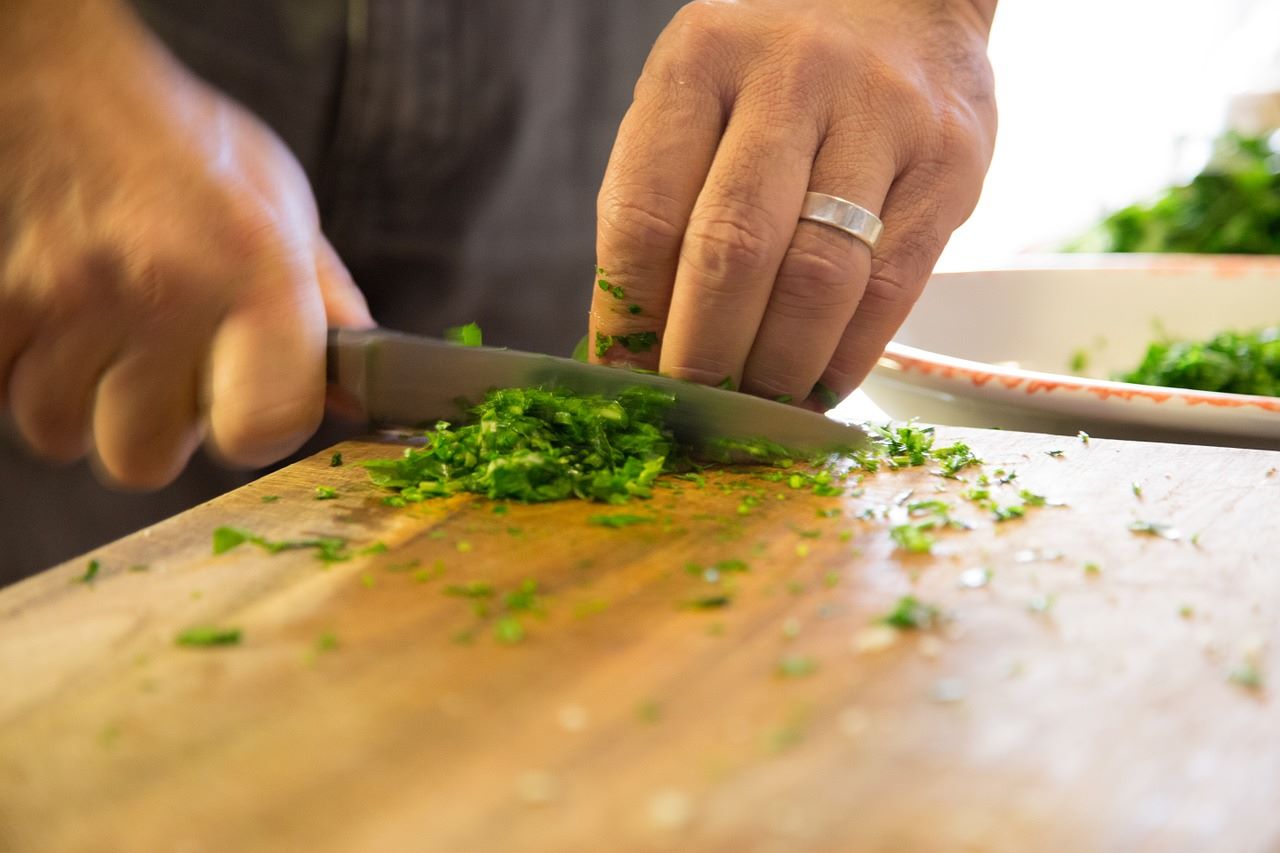
A big cutting board is every chef’s dream. The large cutting surface allows you to cut multiple ingredients at once without moving cut ingredients around to make rooms. It’s perfect for cutting large items such as roasts, chickens, or hams. Most commercial kitchens use a big cutting board when preparing dishes that require multiple ingredients.
Here are varied big size cutting board dimensions
- 7 inches by 23 inches
- 18 inches by 18 inches
- 18 inches by 24 inches
Some boards are extremely large, measuring 18 inches by 30 inches, while others measure 20 inches by 30 inches. These boards are perfect for cutting multiple items at once, but they take up much counter space.
Pros of using a big cutting board
- Large cutting surface
- Can accommodate multiple ingredients
- Excellent for cutting large items
- Stable on the countertop
- Perfect for commercial kitchen setups
Cons of using a big cutting board
- Takes up a lot of counter space
- Can be challenging to move around
- It may be difficult to clean if ingredients get caught in the cracks
Typical cutting board thickness
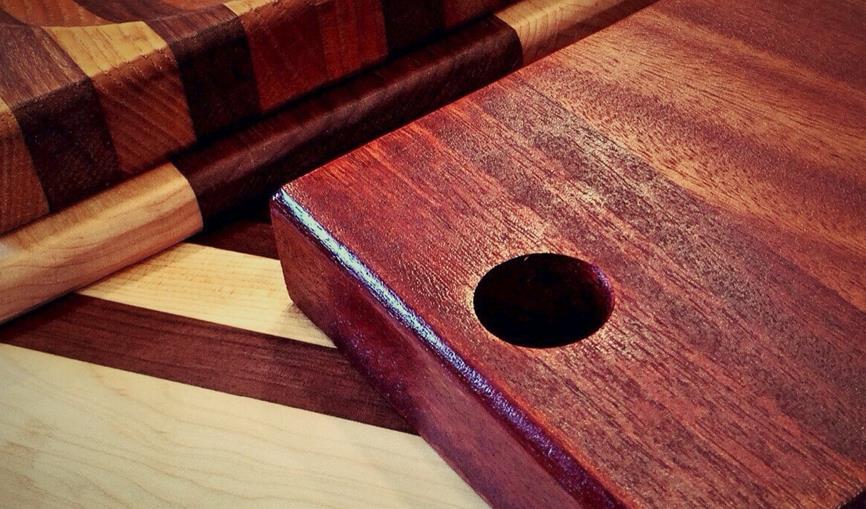
How thick should a cutting board be? The answer to this question depends on the cutting board you want. Notably, the thickness of a cutting board is highly dependent on the material of design, intended use, and manufacturing process.
Take plastic or silicone, for instance. Cutting boards from these materials can be as little as 1/2 of an inch thick and won’t make as much difference when cutting. The material of design, in this case, determines the cutting board’s overall thickness.
Wooden cutting boards, on the other hand, are a different story. These boards are generally thicker than their plastic or silicone counterparts, with typical measurements between 1 1/4 inches to 2 inches thick. A thicker cutting board means that the cutting surface will withstand more wear and tear.
Generally, chefs use thick wooden cutting boards for cutting tougher items, like raw meat. A cutting board this thick can also withstand a lot of pressure without breaking. It’s stable on the surface and can take some severe pounding without showing any signs of damage.
Cutting board styles
Apart from size, we can categorize cutting boards based on their shapes, material of design, features, and type.
Shape
The shape of the cutting board is an important consideration, as it can determine how well the board functions for cutting. Generally, cutting boards are shaped in two ways: rectangular or round. However, we can have cutting boards that are oval or square.
Rectangular board
Rectangular cutting boards are the most popular type and are also the basis of discussion in this article. The ideal size for a rectangular cutting board should be large enough to accommodate all of your cutting needs, but not so large that it takes up too much counter space.
Round board
Round cutting boards are not as popular as their rectangular counterparts, but they are the most traditional of all cutting board shapes. A round cutting board is perfect for cutting smaller items and is especially handy when your culinary needs involve cutting in rotations. If you are considering a knife gift, you may want to throw in a round cutting board to the mix.
Oval board
An oval cutting board is a good choice if you want a rectangular and round cutting board mix. Its design is a cross between the two shapes and is perfect for cutting longer and narrower items, such as carrots or celery.
Square board
A square cutting board is perfect for cutting square-shaped items, such as sandwiches or brownies. Although not as common as rectangular boards, they have their place in the kitchen.
Material
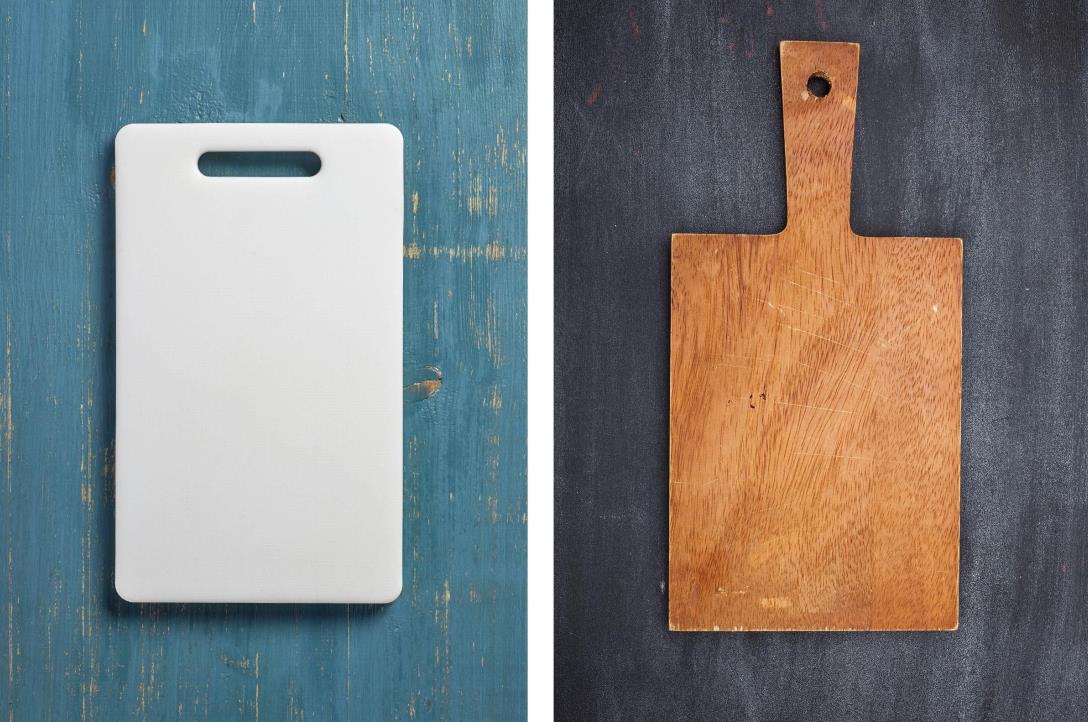
The best cutting board material is wood. However, plastic is also a good choice. Comparing wood vs. plastic cutting boards involves a lot of factors and is beyond the scope of this article.
If you opt for a cutting board made from wood, consider whether it’s edge grain, face grain, or end grain. It should also be thick enough for your cutting needs.
Other materials such as granite, glass, and marble are not as commonly used for cutting boards, but they have advantages and disadvantages.
Features
The design material determines the particular features of a cutting board. However, some features are not common to all cutting boards. For instance, you may want a cutting board that’s reversible in that you can use both sides without worrying about cutting into the cutting surface.
Other cutting boards feature non-slip rubber feet or a juice groove. The juice groove is a channel that runs along the edge of the cutting board and is designed to collect any juices that may run off the cutting surface.
Consider a dishwasher-cafe cutting board that comes with a set of essential kitchen knives as a complement or features personalized engraving or color codes to make it extra special. One with handles makes it easy to carry around.
Category/ type
We can categorize cutting boards into carving boards, breadboards, or butcher blocks. A carving board features a V-shaped cutting groove designed to hold the meat in place as you carve it.
A breadboard is longer than standard-sized cutting boards and is designed to accommodate a loaf of bread or multiple loaves at one time. Butcher blocks are thicker than standard cutting boards and may require some level of butcher block treatment or maintenance to protect the wood.
How to choose the best cutting board size
Choosing the right cutting board size is essential to ensuring an efficient, safe and successful cutting experience.
Below are essential factors to consider:
- Basic/starting size: The ideal starting size for a cutting board is 12 inches by 18 inches. This size is perfect for general use and can accommodate most ingredients, but you may choose a smaller or larger cutting board based on your intended use.
- Choose based on your culinary needs: If you are a chef that prepares multiple dishes at once, then you will need a cutting board with a large cutting surface. On the other hand, if you are a home cook that prepares simple meals, a smaller cutting board may be all you need.
- Think about your counter space: Small counter spaces require a cutting board that is smaller in size. Conversely, a larger cutting board is ideal for ample counter space.
- Consider the material: The thickness of the cutting board will vary depending on the material. If you are looking for a cutting board that offers more durability, choose one made with thicker materials like wood. Plastic and silicone cutting boards are thinner and less durable but easier to clean.
- Cutting board shape: Rectangular cutting boards are the most popular shape and can accommodate a variety of ingredients. However, there are square and round cutting boards available if you are looking for something more specific.
While choosing the perfect cutting board size is essential, it is crucial to consider the cutting board care instructions. Ensure you clean and dry your cutting board after each use to prevent bacteria and fungus growth.
Cutting board size (FAQs)
What is the standard size of a cutting board
The standard size of a cutting board is 12 inches by 18 inches. However, you can find cutting boards in a variety of different sizes to accommodate your needs. Some boards can be larger, while others can be smaller.
What is the best thickness for a cutting board?
The best thickness for a cutting board ranges between 1 1/4 to 2 inches. Thicker cutting boards offer more durability and are less likely to warp, while thinner cutting boards may be easier to clean but are less durable. Plastic cutting boards are often 1/4 inch thick, while wood cutting boards are generally 1 1/4 to 2 inches thick.
How do you measure a cutting board?
The right way to measure a cutting board is to consider the board’s length, width, and thickness. The ideal dimensions for a cutting board are 12 inches by 18 inches by 1 1/4 to 2 inches. However, you can find cutting boards in various sizes and shapes.
Why is a thick cutting board better?
A thick cutting board is better because it is more durable and less likely to warp. Thicker cutting boards are also quiet when chopping compared to thin cutting boards. If you are looking for a cutting board that will last you for years, choose a thick cutting board made from wood.
Closing
Cutting board sizes vary depending on the material, shape, and intended use. When choosing the perfect cutting board for your needs, it is important to consider these factors. Smaller cutting boards are great for home cooks with limited counter space, while larger ones are perfect for commercial kitchens with more space.
Visit our blog for more cutting board information and care tips. Consider our store for exciting knife and kitchen accessory deals.





